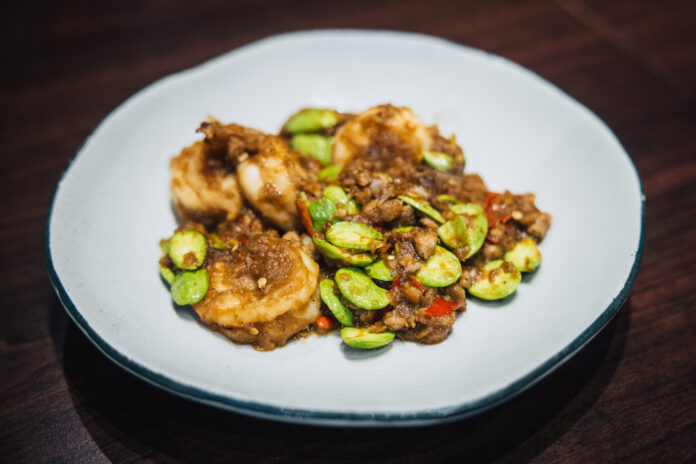The American South has always beckoned with its soulful music, mouthwatering cuisine and legendary hospitality. But with recent headlines announcing that airlines are slashing flight prices to the US, there’s never been a better time to plan your Southern adventure. After all, why should the people and businesses suffer because of their president?
Sprawling from Virginia to Texas, connected by ribbons of tarmac that wind through misty mountains and sun-dappled bayous, the South isn’t just one thing – it’s a jigsaw of distinct regions, each with its own quirks and charms. We’ve been lucky enough to criss-cross this part of America several times, and these are the things we wish we knew before our first visit.
Visa: Mind Your P’s & Q’s
Let’s start with the practicalities. Recent reports in The Guardian highlight a concerning trend: tourists with minor visa infractions have found themselves detained or even deported by overzealous border officials. This isn’t meant to scare you off, but rather to emphasise the importance of getting your paperwork sorted well in advance.
Whatever you do don’t take chances with your paperwork. If you’re eligible for the ESTA visa waiver program, double-check that your application has been approved before booking flights. And remember – an ESTA isn’t guaranteed entry; it’s just permission to board your flight.
Be sure to print out your ESTA approval and any hotel bookings. Have your return flight details to hand. The final decision rests with immigration officers at your port of entry, so ensure your travel intentions are crystal clear and all documentation is spotless. Border officials can be surprisingly picky, and you don’t want your holiday ruined before it’s even started.
When To Visit
Timing your Southern sojourn requires balancing weather, crowds, and regional events. Each season offers distinct advantages and challenges:
Spring (March-May): Perhaps the most magical time to visit. The South bursts into bloom with dogwoods, azaleas, and magnolias creating picture-perfect scenes. Temperatures hover comfortably between 18-26°C in most areas. Charleston’s Historic Garden Week, Savannah’s Garden & Homes Tour, and the New Orleans Jazz Fest make this season particularly vibrant. However, spring breaks (usually in March) can crowd popular coastal destinations.
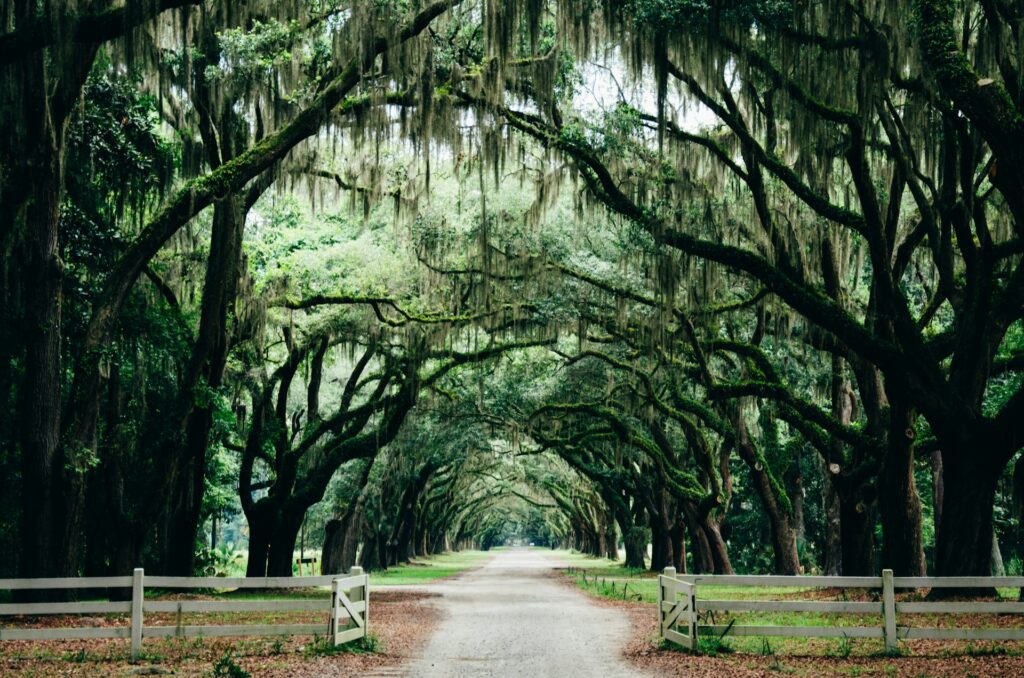
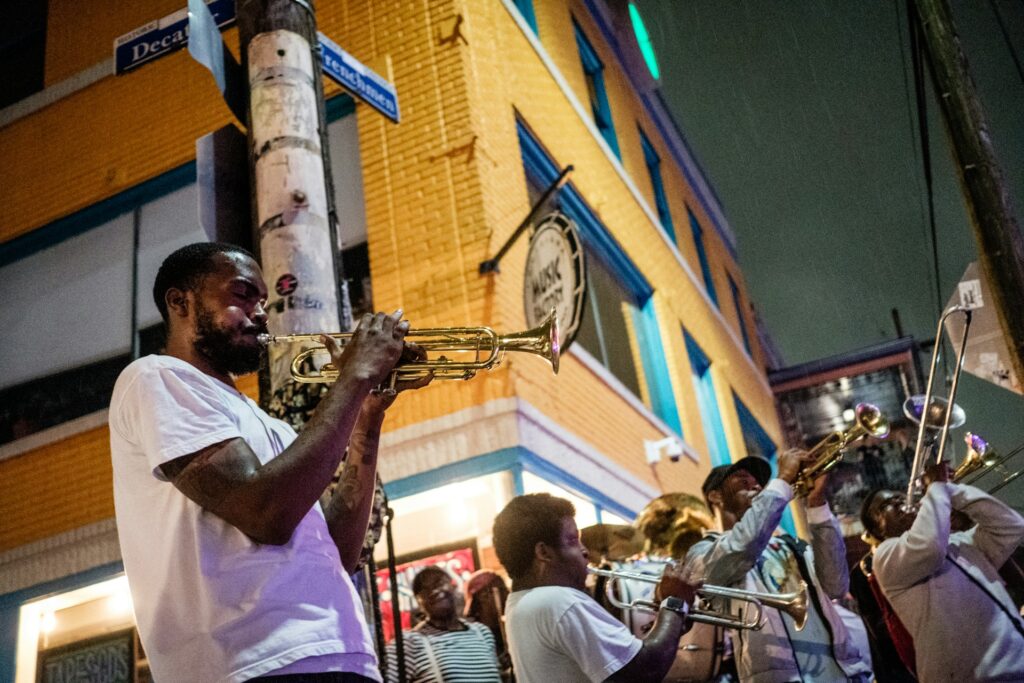
Summer (June-August): There’s no sugarcoating it – summer is hot and humid. Temperatures routinely exceed 32°C with humidity that makes it feel like walking through soup. Coastal areas offer sea breezes but also peak prices and crowds. The upside? Swimming holes, lakes, and beaches provide welcome relief, and summer brings vibrant farmers’ markets bursting with peaches, tomatoes, and watermelons. Air conditioning is universal in accommodations, though outdoor sightseeing is best limited to morning and evening hours.
Autumn (September-November): September remains warm but less humid, while October brings spectacular fall foliage to the Appalachians (the colour progresses from north to south, with peak viewing typically mid-October in the Smokies). November offers crisp days and generally reduced tourist numbers. College football dominates weekend culture, so either plan around games or embrace the spectacle. Harvest festivals abound, showcasing everything from apples in North Carolina to pecans in Georgia.
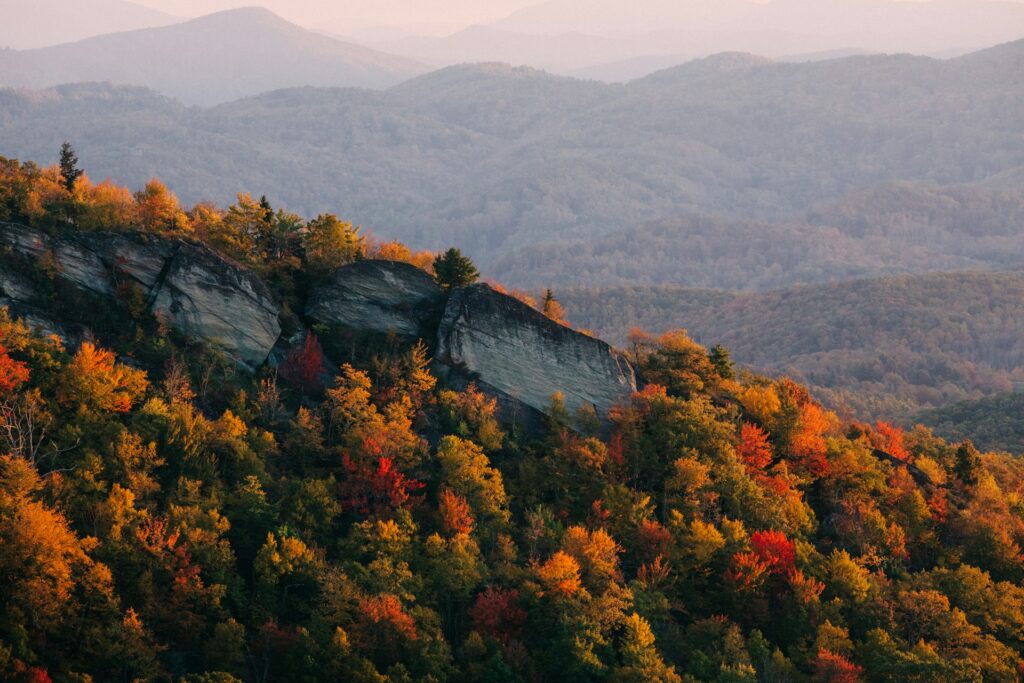
Winter (December-February): The South’s secret season. While you’ll need layers and might encounter the occasional frost, truly frigid days are rare except in the mountains. Temperatures typically range from 7-15°C – perfectly manageable for sightseeing. Tourist attractions are blissfully uncrowded, hotel rates drop significantly, and you’ll get more authentic interactions with locals. The exception is Christmas week and New Orleans during Mardi Gras (usually February), when prices spike. Winter also reveals architectural details and views obscured by summer foliage.
Our recommendation? Late April to mid-May or mid-September to late October offer the most pleasant combination of moderate temperatures, reasonable crowds, and seasonal beauty. Be aware that in some states, Hurricane season officially runs June through November, with peak activity in August and September. If travelling to coastal areas during these months, consider travel insurance that covers weather disruptions and keep an eye on local forecasts.
Rent A Car: Freedom On Four Wheels
While the Greyhound bus network does criss-cross the region, and Amtrak trains lumber through on limited routes, the unvarnished truth is that to truly experience the American South, you’ll need your own wheels.
There’s something profoundly liberating about cruising down a two-lane blacktop with the windows down, perhaps with Lynyrd Skynyrd or Allman Brothers on the stereo (when in Rome, after all). Without your own car, you’ll miss those impromptu detours to roadside boiled peanut stands, curious small-town museums, or sunset views from deserted overlooks.

Most major rental agencies have competitive rates, especially if booked well in advance, and automatic transmission is standard – so no need to worry about grappling with a manual gearbox on the ‘wrong’ side of the road.
Just remember: distances in America are deceptively vast on the map. That seemingly short hop from Nashville to Memphis? It’s about three and a half hours – roughly the distance from London to Manchester.
Ideal Tip: Don’t rely on streaming services – mobile signal can be patchy in rural areas. Instead, scan for local radio stations. WNCW in North Carolina plays an incredible mix of Americana, bluegrass and folk that will perfectly soundtrack your drive.
Let Someone Else Do The Driving
We know, we’ve just sung the praises of getting your own car. But if the thought of navigating unfamiliar highways makes your palms sweat, or you simply prefer to focus on the scenery rather than road signs, an escorted coach tour offers a compelling alternative.
Modern coach tours strike a fine balance between structure and free time, with knowledgeable guides who can illuminate the complex history and culture of the region in ways no guidebook can match. Moreover, guides will know every back road and local haunt which you might not find yourself. Tour operators like American Sky offer thoughtfully crafted itineraries that hit the sweet spot between must-see landmarks and hidden gems.
You do sacrifice some freedom, and the accommodation tends toward chain hotels rather than characterful B&Bs. But for a first-time visitor, sinking into a comfortable seat as your coach glides from the stately elegance of Charleston to the haunting beauty of Savannah’s moss-draped squares, before continuing to the jazz-infused streets of New Orleans – all without once having to worry about parking, navigation, or who’s turn it is to drive sounds pretty appealing, right?
Don’t Miss The Wild Side: Beyond The Cities
When people think of the American South, their minds often leap to music venues and food scenes. Yep, the cities get all the attention, but the Southern wilderness is just as remarkable. Indeed, long before Memphis had the blues or New Orleans jazz, these lands were shaped by immense natural forces, creating landscapes of breathtaking diversity and beauty.
For hiking enthusiasts, the fog-shrouded peaks of the Great Smoky Mountains National Park that straddle the Tennessee-North Carolina border are a must. Offering more than 800 miles of hiking trails through ancient forests where black bears still roam, a trek though these mountains can be quite the adventure. If you visit in autumn (or “fall” as the locals call it), the colours are spectacular. Be warned, this is America’s most visited national park, so advance planning is essential – especially if you’re hoping to secure accommodation within the park boundaries or tackle popular trails like the route to Clingmans Dome, the highest point in Tennessee.

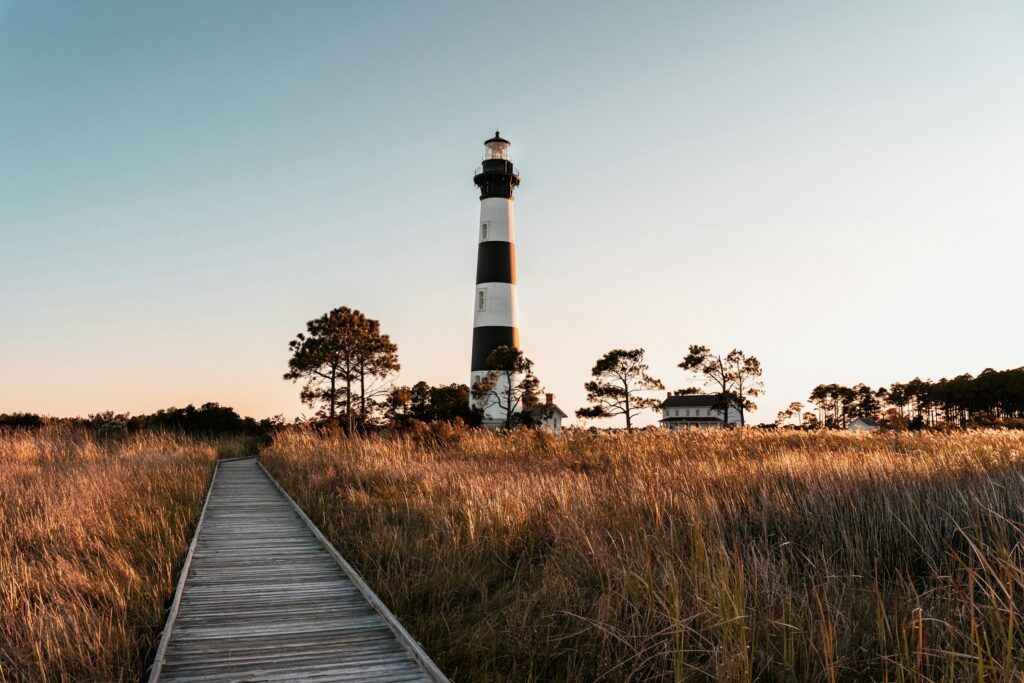
The coastal areas are worth exploring too. Georgia’s barrier islands combine pristine beaches with salt marshes and maritime forests. The Outer Banks in North Carolina feel wonderfully wild and remote. This chain of narrow islands form a fragile barrier between the mainland and the Atlantic, their windswept beaches and dunes home to wild horses thought to be descendants of Spanish shipwreck survivors. Meanwhile, the vast wetlands of the in Georgia and the primeval bayous of Louisiana offer glimpses into ecosystems that have remained largely unchanged for millennia.
When exploring the wild side of the the Southern states, pack sturdy walking shoes, plenty of water, and – crucially – insect repellent (more on that later). Oh and if you’re visiting in summer, the South has countless natural swimming spots that offer relief from summer heat. Locals often know the best ones – ask about nearby swimming holes, springs, or “blue holes” as they’re sometimes called in Tennessee and Kentucky.
Small Town Stops: The Heart Of Dixie
Between the marquee destinations lie the small towns that form the true backbone of the South. Indeed, some say the small towns are where you’ll find the real culture.
Take Starkville, Mississippi, which has recently claimed the crown as the South’s most visit-worthy small town according to USA Today. Home to Mississippi State University, it blends collegiate energy with deep-rooted Southern traditions. By the way, if you’re in any university town on a game day (usually Saturdays in autumn), expect traffic jams, packed restaurants, and locals dressed head-to-toe in team colours. College football isn’t just a sport but a regional religion.

Or consider Beaufort, South Carolina, where antebellum homes line sleepy streets that have served as backdrops for films like “Forrest Gump” and “The Big Chill.” Here, you can take a leisurely horse-drawn carriage tour before dining on fresh-caught shrimp and grits as the sun sets over the Intracoastal Waterway.
Even smaller hamlets reward the curious traveller. In Clarksdale, Mississippi – population around 15,000 – you’ll find the crossroads where Robert Johnson allegedly sold his soul to the devil in exchange for guitar prowess, as well as authentic juke joints where the blues still wails into the wee hours.
Indeed, it’s often worth bypassing the interstates when you can and take the slower routes through places that aren’t in the guidebooks.
Follow The Backbeat: Music Musts
The South’s contribution to global music culture cannot be overstated. This is the fertile crescent from which sprang the blues, jazz, country, rock ‘n’ roll, and countless hybrid genres. Music isn’t just entertainment here – it’s the lifeblood of communities, a living, breathing art form that continues to evolve while honoring its roots.
Nashville naturally tops many musical pilgrims’ itineraries. The neon-lit stretch of Broadway downtown throbs with honky-tonks, where bands play for tips from morning until the small hours. But venture beyond this tourist magnet to places like the Bluebird Cafe, where Station Inn, where bluegrass virtuosos pick and grin to appreciative audiences.
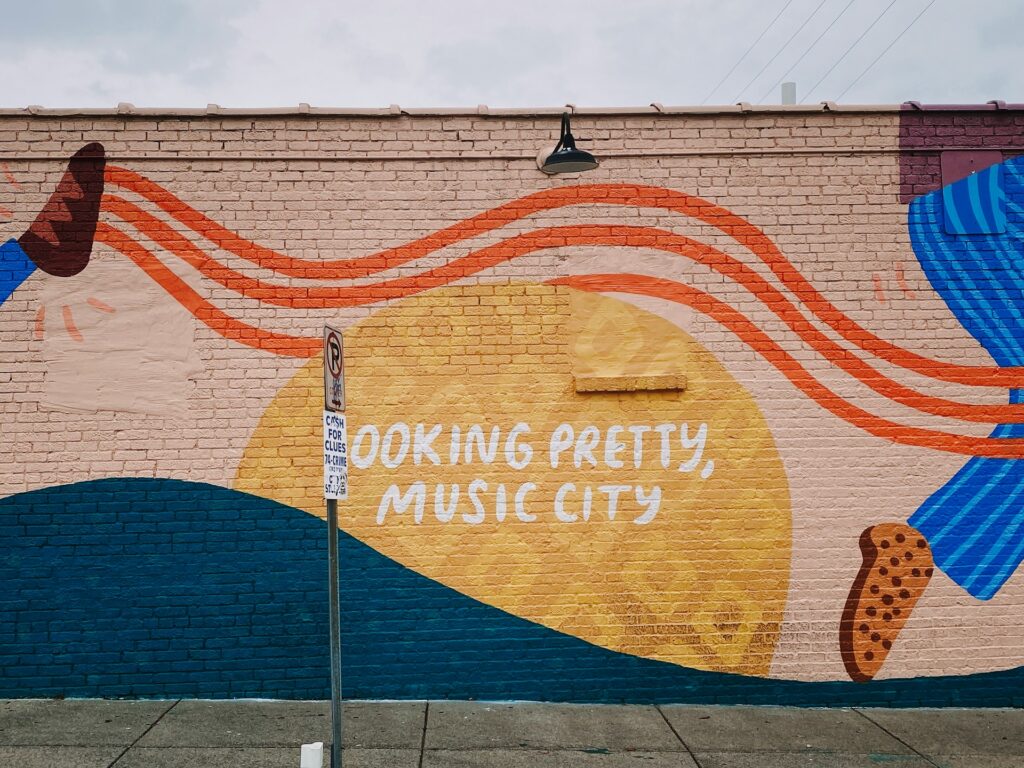
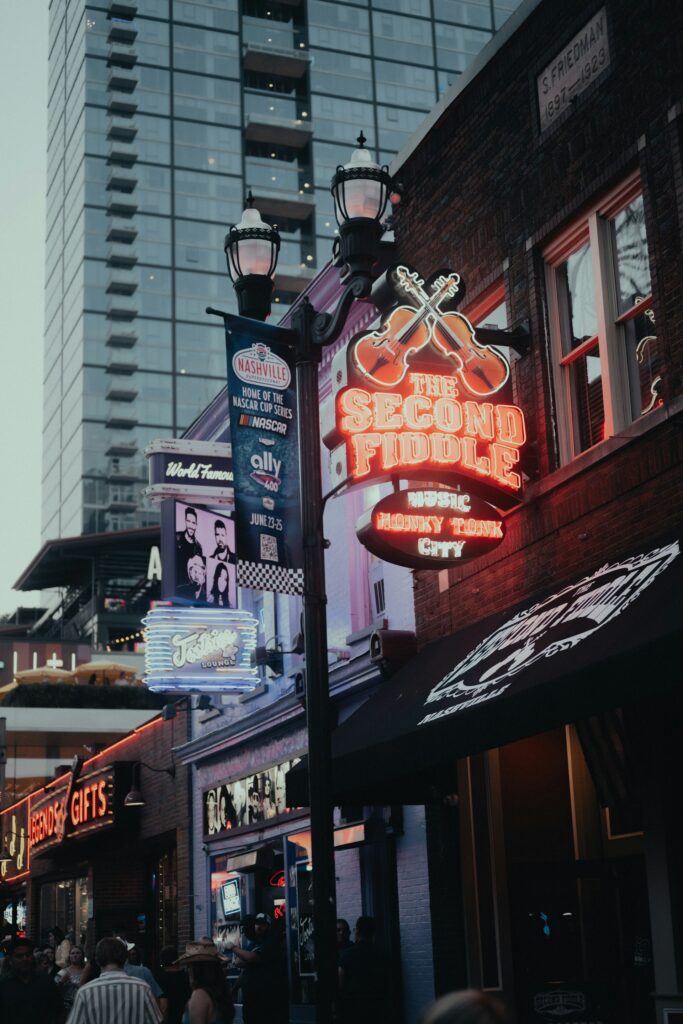
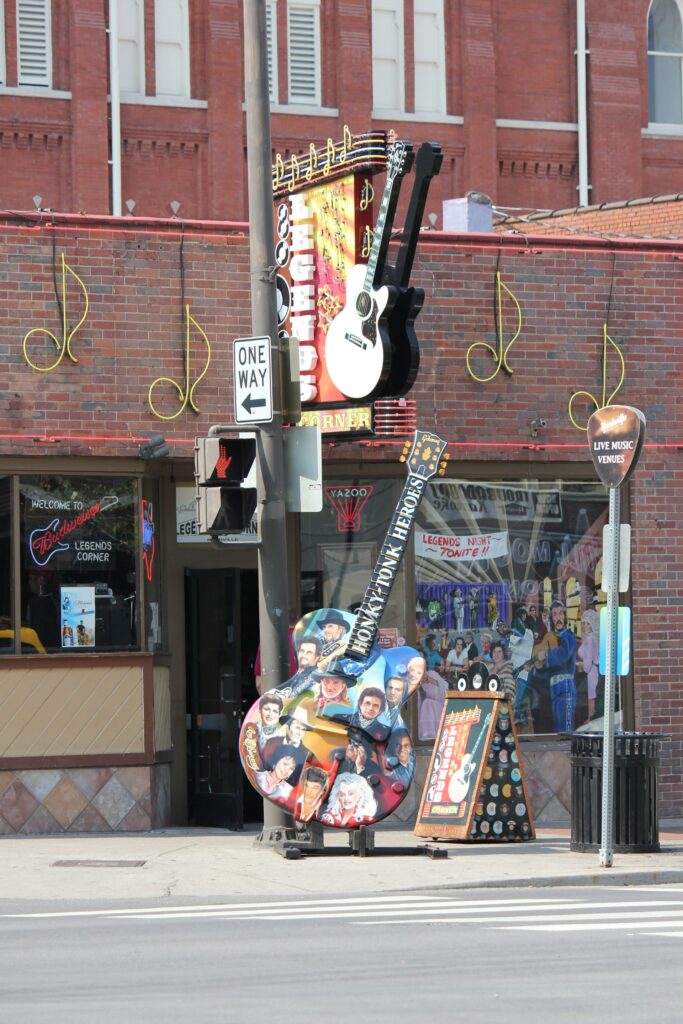
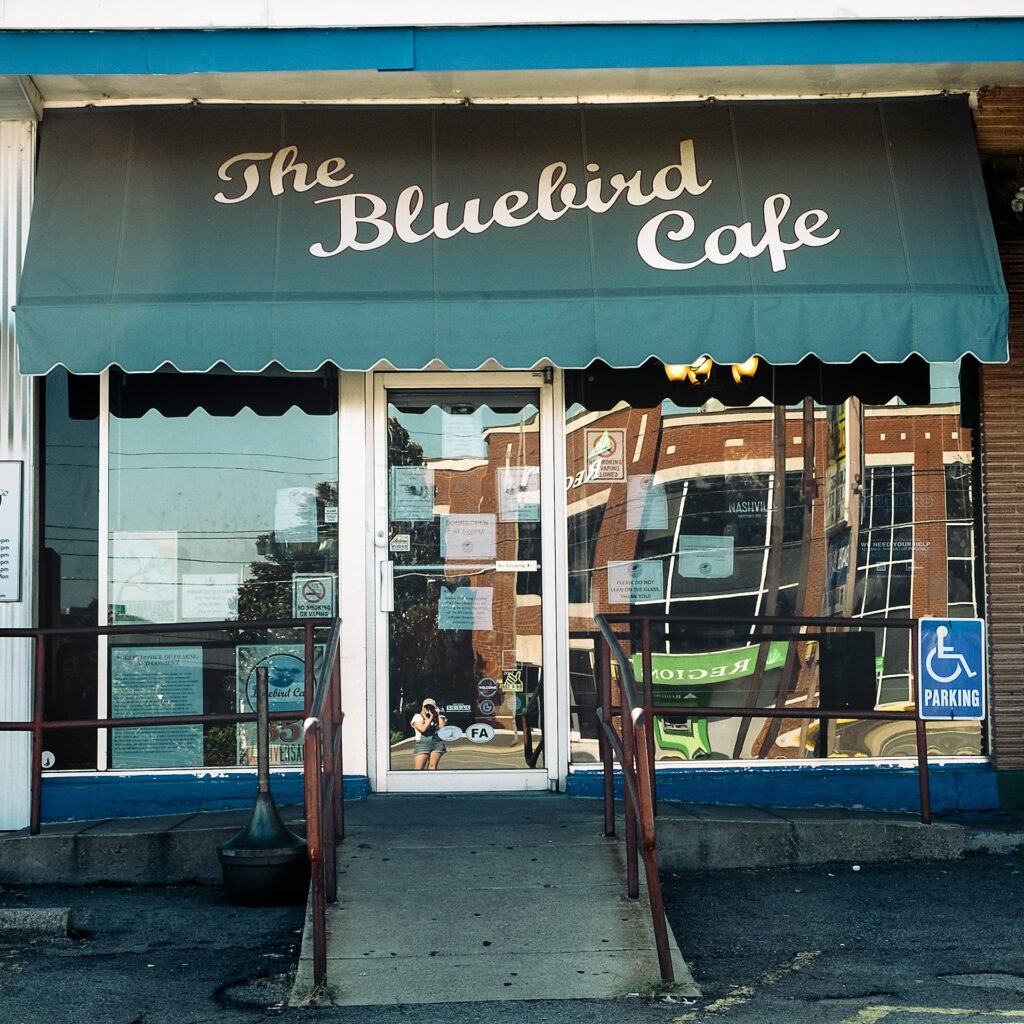
Memphis offers a different but equally essential musical odyssey. Beale Street may now be somewhat commercialised, but it remains a vibrant entertainment district where blues clubs stand shoulder to shoulder with soul food restaurants. And yes, Graceland is unabashedly kitschy in parts, but even the most committed music snob must acknowledge the powerful simplicity of the Meditation Garden where Elvis and his family members are buried. New Orleans, meanwhile, presents yet another musical tradition – one deeply rooted in the city’s unique cultural gumbo. From the traditional jazz at Preservation Hall to the brass bands that might spontaneously parade down French Quarter streets.
Music is everywhere in the South, not just in the obvious places. Yes, you should visit Nashville and Memphis but even smaller cities have great music scenes. In Athens, Georgia (home to bands like R.E.M. and the B-52s), you can watch up-and-coming groups at the Georgia Theatre.
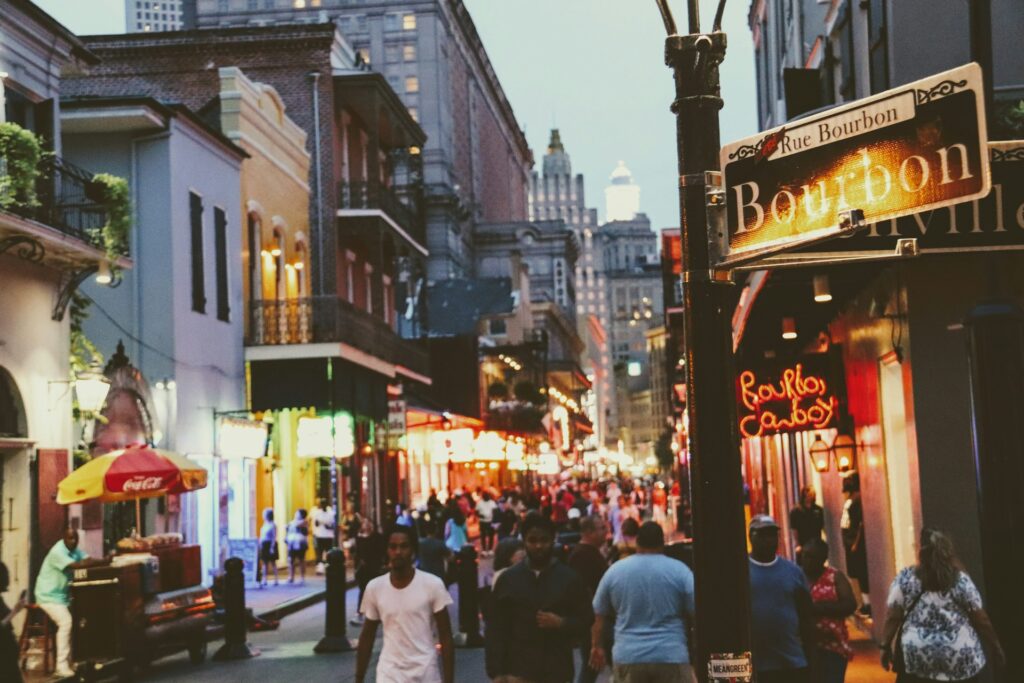
The Slow South: Embrace The Pace
Perhaps the most significant adjustment for visitors is adapting to the South’s unhurried rhythm. This isn’t a place that responds well to tight itineraries or rushed interactions. The seemingly simple act of ordering coffee might evolve into a ten-minute conversation about where you’re from, who your people are, and whether you’ve been enjoying your visit.
This languid approach to time can initially frustrate efficiency-minded travellers, but surrendering to it brings unexpected rewards. When a shopkeeper in Savannah tells you they’ll be with you “directly,” understand that this could mean anything from thirty seconds to fifteen minutes. When your server in a Charleston restaurant asks, “How y’all doing today?” they genuinely want to know.
The Southern drawl itself – which varies considerably from Virginia’s genteel tones to the more pronounced twang of Texas – seems designed for taking one’s time. Consonants soften, vowels stretch, and even the most mundane exchange becomes somehow more melodious when delivered at this measured pace.
Allow extra time for everything, resist the urge to check your watch, and remember that in the South, being in a conspicuous hurry is considered mildly impolite at best and downright rude at worst.
Celebration Central: Plan Your Trip Around A Festival
If you can, time your visit to coincide with one of the South’s many festivals. They range from the internationally famous to the delightfully obscure. Southern festivals are an exuberant expressions of local culture, often with deep historical roots. Timing your visit to coincide with one of these celebrations can provide an unfiltered window into regional traditions.
New Orleans‘ Mardi Gras is the colossus of Southern festivals, a weeks-long extravaganza culminating in Fat Tuesday’s riotous parades. But beyond this internationally renowned carnival lie countless smaller, equally authentic celebrations. Charleston’s Spoleto Festival, for example, transforms the city into a performing arts mecca each May and June, with world-class opera, dance, and theatre performances in historic venues throughout the peninsula.

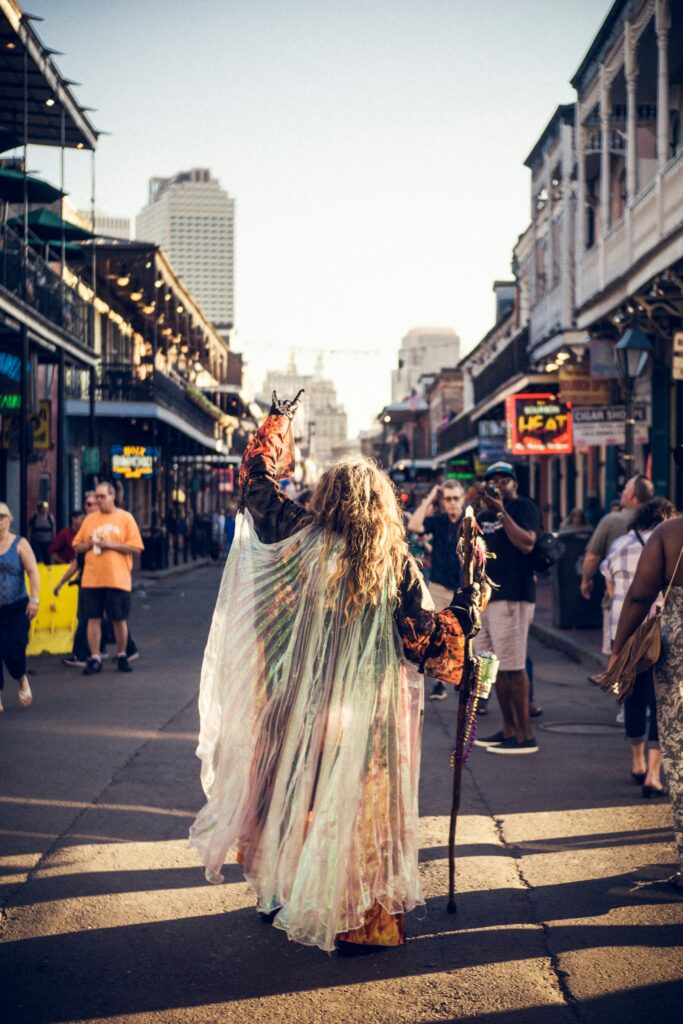
For culinary enthusiasts, the New Orleans Wine & Food Experience offers a sophisticated sampling of the city’s gastronomic prowess, while Memphis in May includes the World Championship Barbecue Cooking Contest, where pitmasters compete for supremacy in the art of slow-smoked perfection. Our favourite is the New Orleans Po-Boy Festival (October), where dozens of restaurants compete to create the most inventive versions of this iconic sandwich. We tried everything from classic fried shrimp to duck confit with cherry glaze.
Research seasonal events before finalising your itinerary – you might discover that your travel dates coincide with a uniquely Southern celebration you’d never otherwise experience. Oh and book accommodation well in advance for major festivals – ideally six months or more o else you might end up in a dodgy motel on the outskirts of town.
Bug Alert: The Persistent Companions
No one warns you about the insects so let’s be blunt: the American South has bugs. Lots of them. The warm, humid climate creates ideal conditions for a startling variety of insects and depending on when and where you visit, they can range from mildly annoying to genuinely problematic.
Mosquitoes are the most notorious, particularly in coastal and wetland areas during summer months. But they’re joined by an impressive supporting cast: no-see-ums (tiny biting midges), fire ants (whose painful stings belie their small size), and yes, cockroaches – including the alarming palmetto bugs that have the disconcerting ability to take flight.
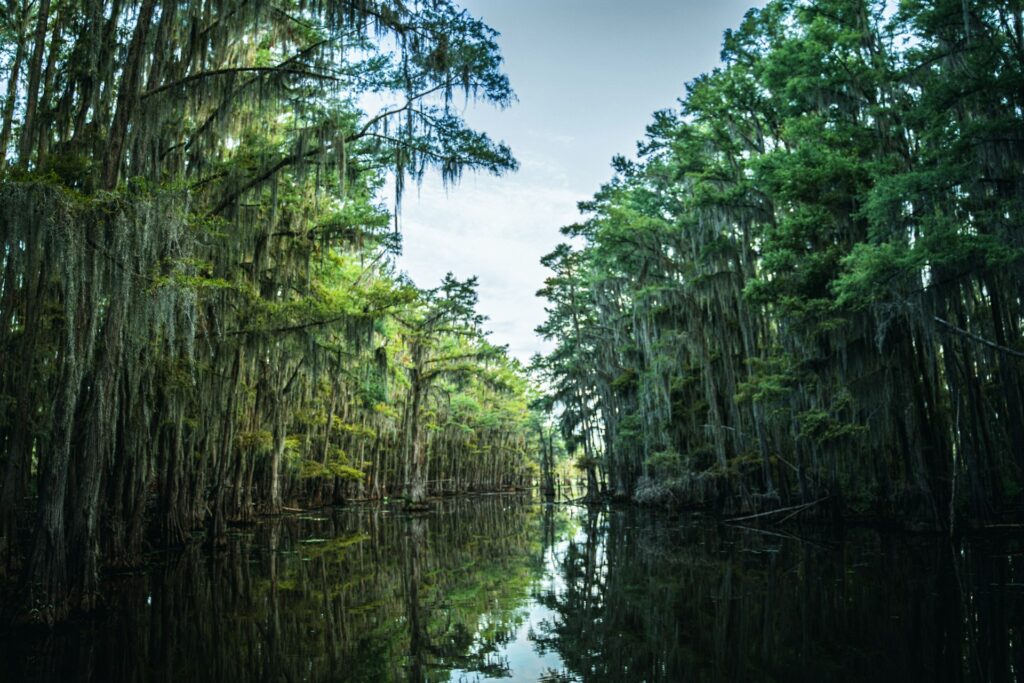
Don’t let this deter you from outdoor experiences, but do come prepared. Pack insect repellent containing DEET for serious protection, or opt for more natural alternatives like oil of lemon eucalyptus if you prefer. Light-coloured, loose-fitting clothing offers some defence, as does avoiding outdoor activities during dawn and dusk when mosquitoes are most active.
In accommodations, resist the temptation to leave food out, even briefly – particularly in humid coastal regions where the local insect population views unattended snacks as an invitation to party.
That all said, don’t let the bugs put you off enjoying the outdoors – just be prepared. And take comfort in the fact that locals deal with these conditions year-round and still manage to have a thriving outdoor culture.
Explore The South’s Story
You can’t properly understand the South without engaging with its history. The region’s extraordinary cultural contributions – in music, literature, food – emerged alongside (and often in response to) profound injustice and struggle.
Indeed, the American South’s history is as complex as it is consequential, encompassing soaring triumphs and profound tragedies. A thoughtful exploration of the region requires engaging with this multifaceted past, acknowledging both the beauty of the South’s cultural contributions and the deep scars left by slavery and segregation.
In recent years, many Southern cities have made concerted efforts to present more inclusive historical narratives. The Legacy Museum and National Memorial for Peace and Justice in Montgomery Alabama, confront the history of racial injustice with unflinching honesty.The National Civil Rights Museum in Memphis, built around the Lorraine Motel where Martin Luther King Jr. was assassinated, tells the story of the movement through powerful exhibits while the Whitney Plantation near New Orleans stands as the only plantation museum that focuses primarily on the experiences of enslaved people.
These aren’t always comfortable visits, but they’re essential for understanding the forces that shaped the modern South. Many of these sites have embraced timed entry systems, so check websites before visiting and book tickets in advance where possible.
Bring Elastic Trousers
Yes, you will probably put on weight visiting America’s Southern States. Consider it a souvenir.
Southern cuisine defies simple categorisation – it’s a constellation of distinctive regional cooking styles united by a reverence for tradition and a certain generous spirit. What outsiders often lump together as “Southern food” encompasses everything from the seafood-centric Lowcountry cuisine of coastal South Carolina to the Cajun and Creole traditions of Louisiana to the smoke-infused barbecue variants found throughout the region.
Each area has its specialties. The vinegar-based pork barbecue of eastern North Carolina is completely different from the tomato-sauced ribs of Memphis or the beef-centric approach of Texas. New Orleans alone has multiple distinct food traditions, from elegant Creole cuisine to the humble but perfect po’ boy sandwiches.
What these diverse cuisines share is a tendency toward generous portions and unabashed celebration of flavour. Vegetables – often simmered with smoked meat for seasoning – deserve special attention. Don’t miss classics like collard greens, fried green tomatoes, or okra (whether pickled, fried, or stewed).
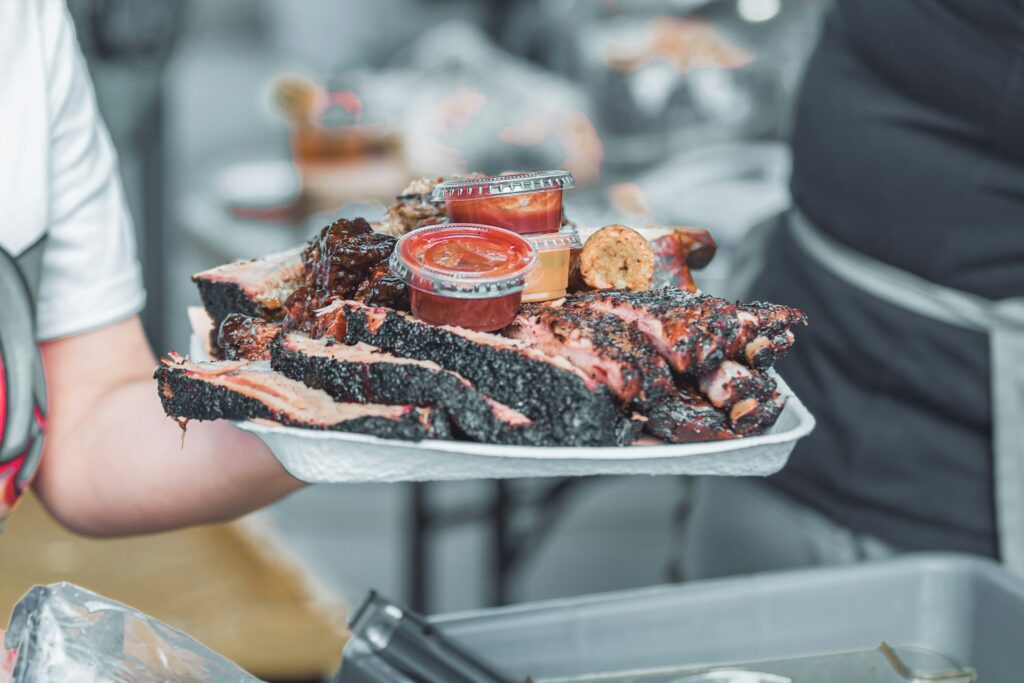
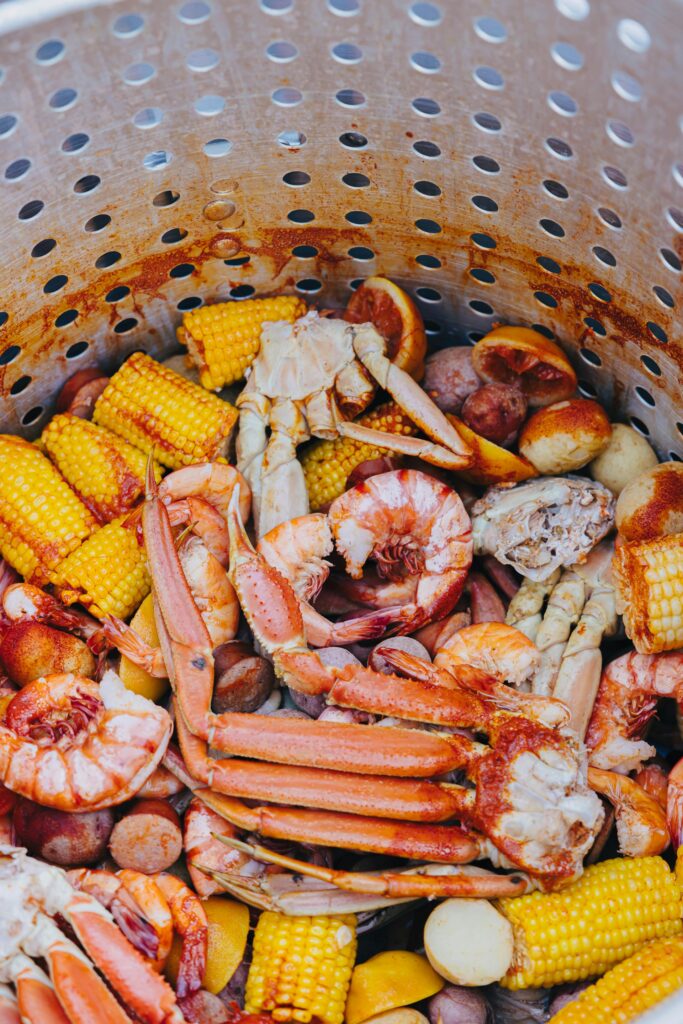
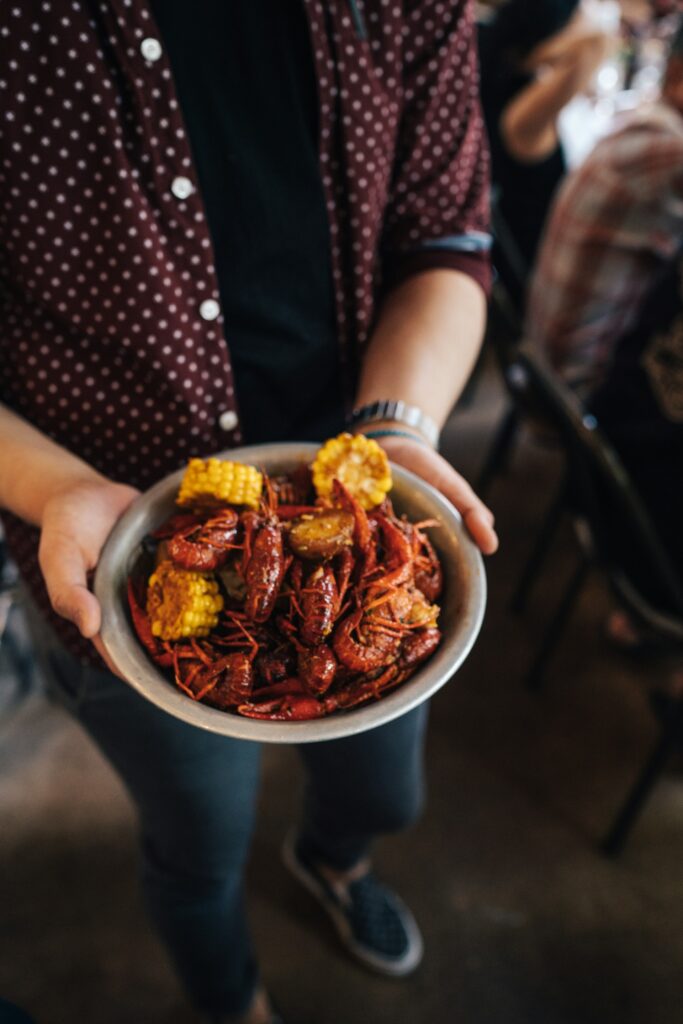

Breakfasts merit particular mention – from fluffy buttermilk biscuits slathered with sausage gravy to chicken and waffles drizzled with maple syrup and hot sauce. These morning meals can sustain you well past lunchtime, which might help offset the surprisingly reasonable prices you’ll find in many Southern eateries outside major tourist areas.
With value in mind look for restaurants advertising as “meat-and-three” – these local institutions let you select one meat and three vegetable sides for a fixed price. It’s usually better value and more authentic than tourist-oriented eateries.
Oh and one more tip, when ordering iced tea, specify “unsweet” if you don’t want it pre-sweetened. Southern sweet tea is syrupy by British standards – imagine a cold cup of tea with 4-5 spoonfuls of sugar.
Cultural Considerations: It’s Politically Conservative
The South’s conservatism comes as as shock to some people. Biblical references crop up in everyday conversation. Churches anchor social life in smaller communities. Political views that would place someone on the fringes in Britain represent the mainstream in many Southern counties.
The American South has long been the nation’s most politically and socially conservative region, a fact that shapes everything from local laws to everyday interactions. While major cities like Atlanta, New Orleans, and Austin often lean progressive, step beyond these urban islands and you’ll find communities where religious faith is central to identity and traditional values hold sway.

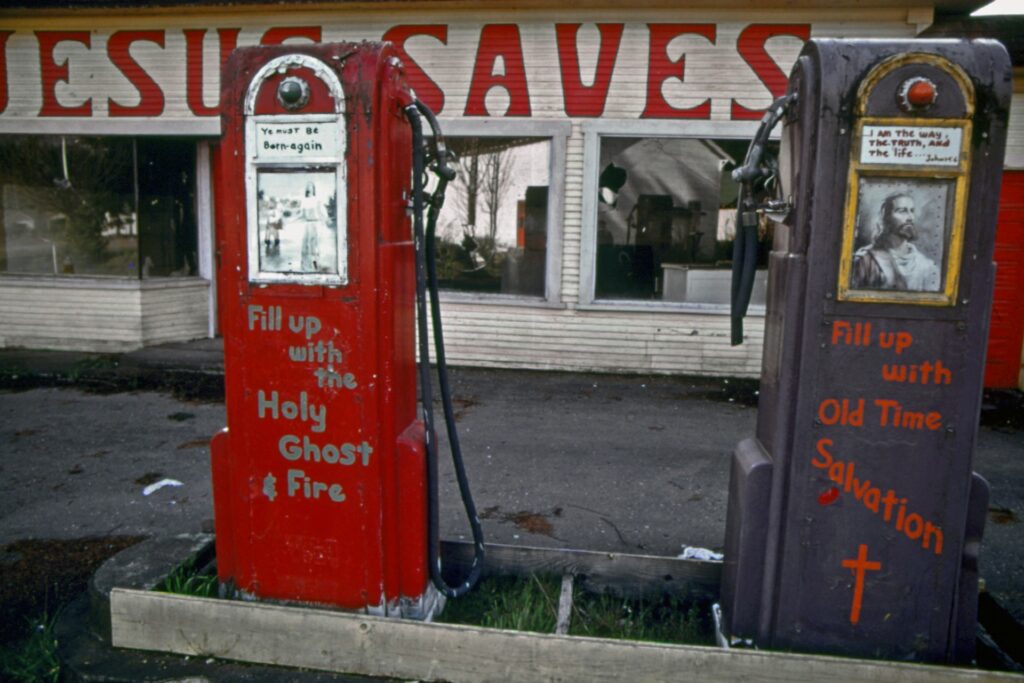
This affects visitors in practical ways. This affects visitors in practical ways. Alcohol sales remain restricted in many areas – some counties prohibit it entirely, while others limit sales on Sundays. Plan accordingly if you’re hoping to purchase wine or spirits for an evening in. Shopping hours may be reduced on Sundays too. Public transport is often minimal, partly reflecting political opposition to government services.
You’ll quickly find that conversations about politics rarely end well. Indeed, political discussions can be fraught territory, particularly given the increasingly polarised nature of American discourse. If these topics arise, listening respectfully will serve you better than engaging in debate, however tempting that might be.
Budgeting: Hidden Costs & Saving Strategies
American pricing customs can catch visitors off guard. Three financial quirks consistently catch out British visitors. First,the price you see on menus or shop tags isn’t the price you’ll actually pay, thanks to sales taxes that vary by state and even by county or city. Budget roughly an extra 10% on purchases.
Secondly, there’s the matter of tipping, which isn’t a discretionary bonus for exceptional service but an expected component of service workers’ compensation. Yep, tipping isn’t optional – it’s how service workers make ends meet. The standard in restaurants is 20% of the pre-tax total. Bartenders, taxi drivers, hotel housekeeping, and tour guides all expect tips as well. Failing to tip adequately is a serious social faux pas that can result in confrontations in extreme cases.

Third, if you’re planning to drive around America’s South yourself, be aware that card payments sometimes work differently. Paying at petrol stations often requires entering your postcode – use 00000 if prompted, or ask the attendant to authorise the pump.
Happily, there are ways to stretch your pounds. Americans consider cheap gas a birthright so it’s cheaper than here in the UK. Accommodation costs drop dramatically outside major tourist centres – consider basing yourself in satellite towns and making day trips into more expensive cities. Many museums offer free admission on specific days of the month, while state and national parks typically charge modest entrance fees for access to world-class natural beauty.
Food can be remarkably economical if you know where to look. Meat-and-three restaurants – casual establishments where you select one meat and three vegetable sides from a daily-changing menu – offer terrific value and authentic flavours. The aforementioned portion sizes work in your favour too; many restaurants will happily provide a takeaway box for leftovers substantial enough to serve as the next day’s lunch.
The Bottom Line
The South rewards travellers who arrive with open minds and flexible expectations. Its contradictions and complexities resist easy categorisation – which is probably why so many visitors find themselves returning repeatedly, discovering new layers with each visit.
This is a region where history feels palpably present, where strangers might still address you as “ma’am” or “sir” without irony, and where the phrase “y’all come back now” is offered as a genuine invitation rather than a mere pleasantry.
Come with an appetite – for food, for music, for stories, for the unexpected detour that leads to the perfect sunset view. The South moves at its own pace, but for those willing to adjust their watches to run on “Southern time,” the rewards are immeasurable.




